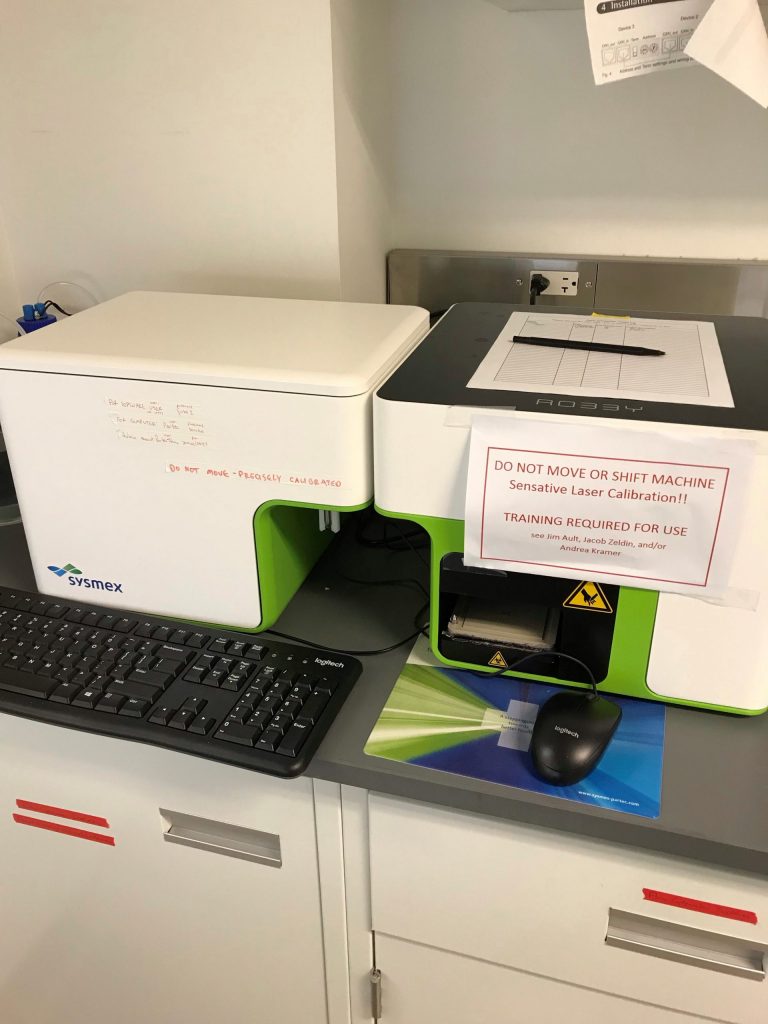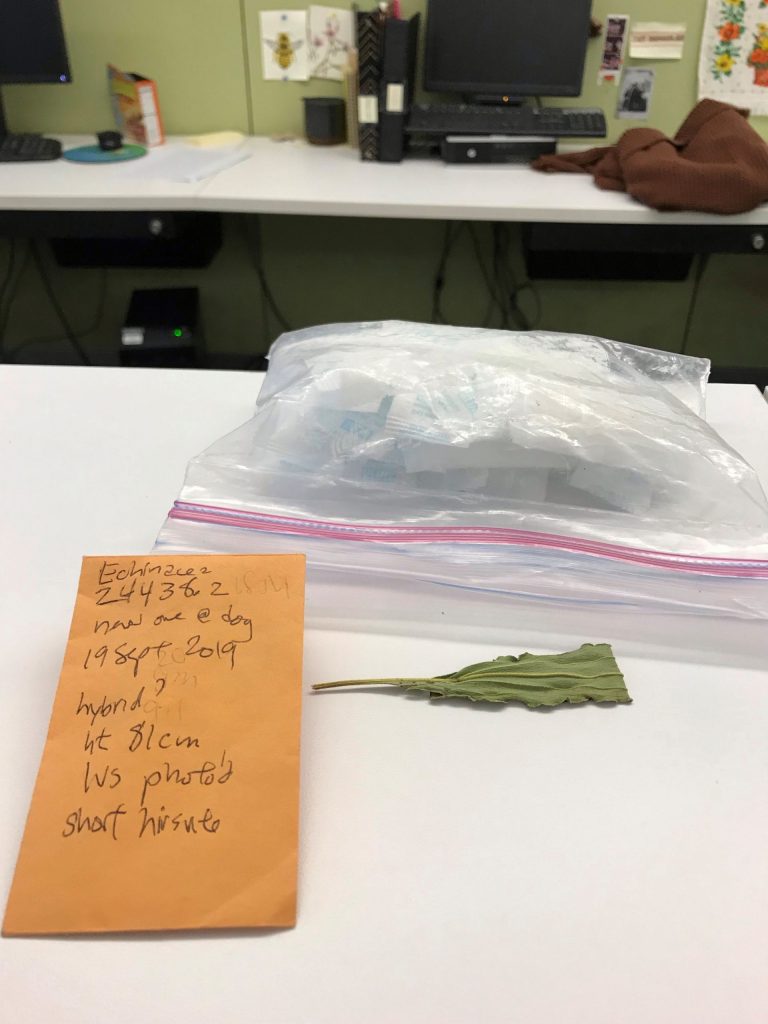To see how ploidy varies in Echinacea species in our study site, in fall 2019, wecollected and dried tissue from E. pallida, E. angustifolia, and E. purpurea. We also collected tissue from potential hybrids and known hybrids. We brought the dried tissue back to the Chicago Botanic Garden, where we plan to analyze ploidy using a flow cytometer, a device that can be used to find relative genome size.


Unfortunately, preparing samples for the flow cytometer is difficult, so we are going to first optimize our Echinacea tissue preparation protocol using live tissue. To do this, we withdrew accessions of E. angustifolia, E. pallida, and E. purpurea from Millennium Seed Bank at the CBG. For E. pallida, we took seed from collections throughout its range to see if its ploidy varies with latitude. We are currently germinating this live tissue to use for ploidy analysis with Elif. We are very excited to see what we find – any finding will help expand genomic knowledge for the genus Echinacea!
Start year: 2019
Location: Hegg Lake WMA, various prairie remnants and restorations, hybrid experimental plots
Overlaps with: Echinacea hybrids (exPt6, exPt7, exPt9), Echinacea pallida flowering phenology
Data/ materials collected: Dried tissue from plants throughout the study area; samples are currently held at Chicago Botanic Garden, in a small box in the glass cupboard to the right upon entering room 159, the Population Biology Lab. Updates will be posted when genome data is available.
Background: If you’d like to learn more about this experiment, check out the background flog post!

Leave a Reply